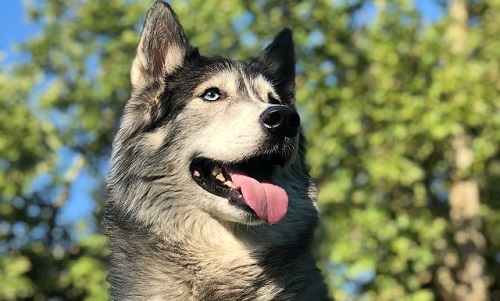As a crucial part of owning a dog, training can sometimes be overwhelming but it doesn’t have to be all serious all the time. Once your pup knows important commands like sit, stay, and lay down you may want to teach other tricks like how to speak. This command can be an entertaining trick, but it also makes it easier to train other cues like “quiet.” According to the American Kennel Club (AKC), you can teach your dog to speak in just a few simple steps.
How to Train a Dog to Speak
 Training your dog to speak, or bark on command is not only fun but useful. Once learned, you can use the speak command to teach your dog to alert you that he needs to go outside, to whisper (or bark in a lower tone), or to be quiet and cease barking altogether on command. When teaching your dog to speak, use these steps:
Training your dog to speak, or bark on command is not only fun but useful. Once learned, you can use the speak command to teach your dog to alert you that he needs to go outside, to whisper (or bark in a lower tone), or to be quiet and cease barking altogether on command. When teaching your dog to speak, use these steps:
- Find something that excites your dog enough that he begins barking. This could be a favorite toy or just a treat. If not, try knocking on something or ringing the doorbell.
- Once found, use the item or action to get your pup to bark.
- As soon as your dog barks, mark it immediately by saying a loaded phrase like “yes” or a dog training clicker and reward with a treat.
- When your dog is offering a bark consistently, you can add in a verbal cue like “speak” or a hand signal.
Tips and Tricks for Training
In order to achieve results, you must train your dog with patience and consistency. However, there are a few important tips and tricks to help keep your pup motivated and happy while facilitating the dog training process.
- Only Reward on Command Simply put, do not reward your dog for barking unless you have asked him to do so.
- Capture One Bark Try to capture a singular bark as you train. You do not want to attach the command “speak” to uncontrollable barking.
- Limit Training Sessions 5-10 minute training sessions are plenty of time for you and your dog to make progress. By keeping your sessions short, you will prevent your dog from becoming frustrated. Try to also limit yourself to only one or two sessions per day.
- Pick the Right Treats You need to properly motivate your dog. Some dogs may train better with more difficult tricks when presented with a special treat they don’t get all the time. Treats should also be relatively small and easy to chew so your pup doesn’t spend his entire training session chomping on treats.
- End on a Positive Note If you begin to get frustrated or your dog becomes distracted and does not seem to be “getting it,” it might be time to end the training session. However, you will want to end on a positive note so as to keep your dog’s confidence high. To end the session, have your dog perform a command he knows and reward him for that.
 In order for training to be effective, you must perform sessions with your dog on a regular and consistent basis. It will require patience and time until your dog is fully trained and performing commands on cue. However, the more time you spend on it, the more disciplined your pup will become. Soon, your dog will “speak” when told!
In order for training to be effective, you must perform sessions with your dog on a regular and consistent basis. It will require patience and time until your dog is fully trained and performing commands on cue. However, the more time you spend on it, the more disciplined your pup will become. Soon, your dog will “speak” when told!




